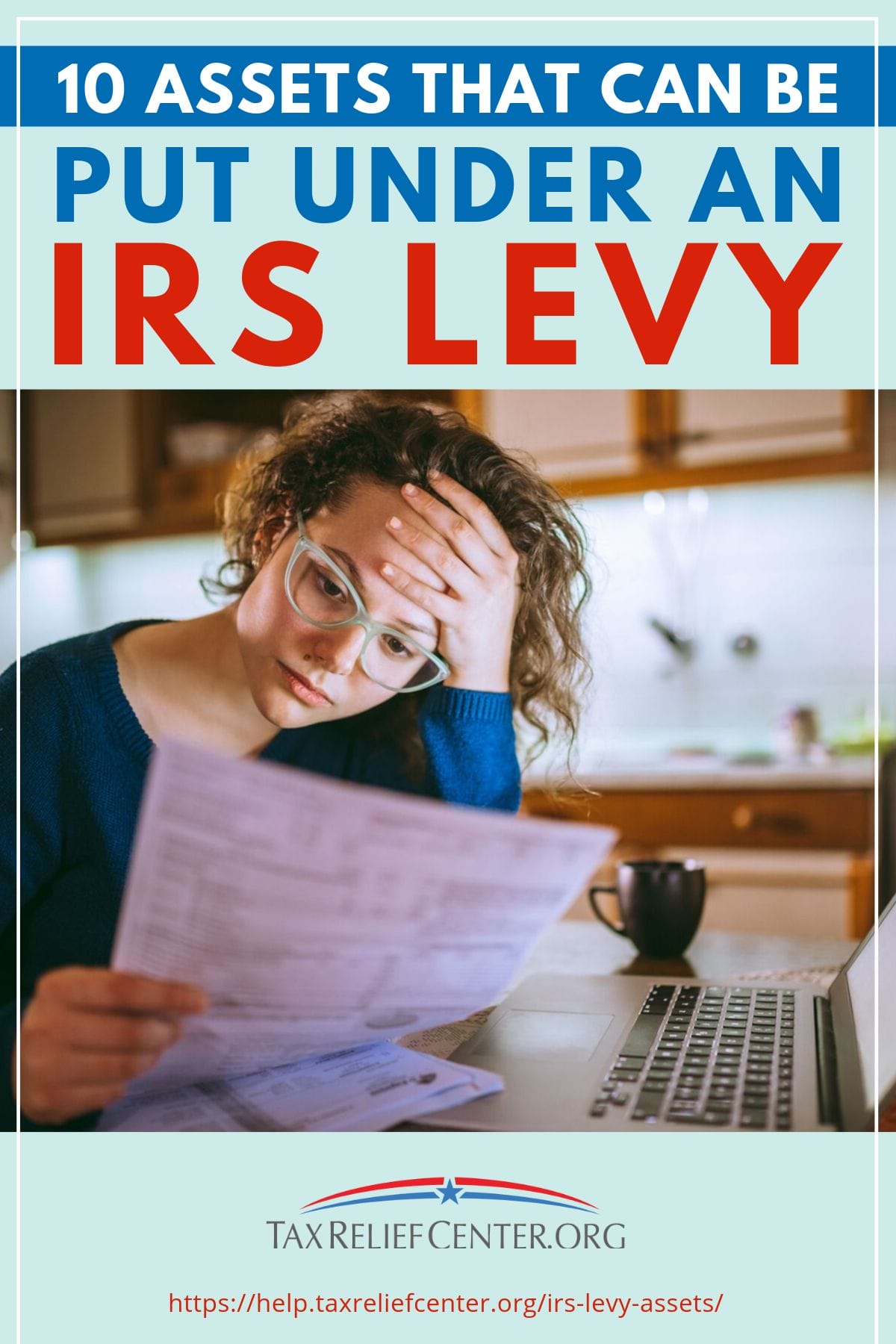Know which of your assets may be eligible for an IRS levy by reading the list below.
RELATED: What Is A Tax Levy? | Everything You Need To Know
In this article:
- Work Pay
- Savings Account
- Investment
- Retirement Accounts
- Life Insurance Policies
- Vehicles
- Second and Vacation Homes
- Expensive Jewelry
- Furniture
- Government Benefits
A List of Assets That Can Be Put Under an IRS Levy
1. Work Pay
The IRS considers two types of assets when assigning a tax levy. These include hard assets and liquid assets.
The most common example of a liquid asset is money. Therefore, money becomes top priority when the IRS decides what assets to levy.
The easiest way to levy a taxpayer’s money is via wage garnishment. This means your employer, in compliance with the IRS, allows automatic deductions from your salary to pay your outstanding tax debt.
If you have receivable payments from debtors or business partners, these amounts may be levied as well. Wage garnishment is normally imposed on tax debts lower than $5,000.
Liquid Asset Definition: Assets that are easy to exchange or turn into actual money.
Hard Asset Definition: Assets that are relatively more difficult to exchange or turn into actual money.
2. Savings Account
A savings account is another type of liquid asset. If levied by the IRS, they are basically collecting actual money from you.
Ease of seizure makes this asset top priority for IRS agents. An IRS levy on a savings account begins with a tax lien notice.
A tax lien on your bank account stays in place for 45 days or before you agree on a payment plan with the IRS. If you fail to pay your back taxes or reach an installment agreement with the agency within this period, the IRS will send you a notice of levy.
3. Investment

An investment account is another form of liquid asset. If you owe the IRS back taxes and the agency finds out that you have investment accounts under your name, the agency can put a levy on these assets.
An investment account covers stocks, bonds, and bank products, to name a few. These assets are of interest to the IRS since they can be quite valuable.
For instance, owning shares of a specific company’s stock means you are practically co-owner of a business. As the company you invested in grows, so does the value of your bought shares.
4. Retirement Accounts
Most financially-responsible individuals allot a portion of their earnings to their retirement funds. If you belong to this group, it only follows that you have your tax returns in order, too.
If the first statement applies to you, but not the second, your entire financial strategy proves a bit muddled. Remember that the IRS can put a levy on your retirement fund, which defeats the purpose of keeping one.
It is in your favor to plan for your financial future while not neglecting your present financial responsibilities. Otherwise, all of your preparations might prove futile.
5. Life Insurance Policies
Life insurance policies are another type of asset that is of interest to the IRS. That is because these financial products correspond to a fixed value that can easily be cashed in on.
Life insurance policies come in various subcategories. These include term life, whole life, permanent life, and universal life insurance, among others.
If you have bought any of these policies and have fallen behind in your tax payments, the IRS can impose a levy on your insurance policy.
RELATED: Understanding The IRS Collection Process To Quickly Resolve Taxes
6. Vehicles

Vehicles belong to the hard asset category, which means they can prove a bit difficult to liquidate into actual money. Still, the IRS routinely levies these assets, especially if a taxpayer has no other means to satisfy their outstanding debt.
However, there are limitations that govern levies on hard assets. For instance, the IRS is prohibited to seize a vehicle which serves as a taxpayer’s primary mode of transportation.
Case in point: a car employed on a daily basis for work or school-related purposes is ideally excluded from a potential notice of levy.
7. Second and Vacation Homes
Just like with vehicles, sole residences are also spared from tax levies. That is, if the said property can be categorized as basic shelter.
In case of opulent homes that, if sold, will allow a taxpayer to pay their back taxes and afford a residential downgrade, the IRS will likely resort to levying the asset.
Second homes and vacation homes are automatically levied if need be. That is because these assets are not deemed essential to a taxpayer’s basic survival.
8. Expensive Jewelry
Being deprived of costly jewelry pieces will in no way affect a person’s daily survival. For this reason, expensive jewelry sets are popular subjects of tax levies, especially those made from valuable materials such as gold and diamonds.
9. Furniture

The IRS does not put a levy on furniture pieces amounting to $7,720 or cheaper. This narrows down furniture pieces that are commonly levied to valuable antiques and art pieces, such as prized paintings and sculptures.
After they are seized by the IRS, these items are quickly sold or auctioned off.
10. Government Benefits
Some taxpayers evade paying taxes by stopping working altogether and instead relying solely on government benefits. To get around this situation, the IRS can also impose a levy on government benefits, if they deem appropriate.
Government benefits that may be levied include social security, welfare or public assistance, unemployment, and worker’s compensation payments. Excluded from these are social security disability payments, as well as any money you have allocated for child support.
Government benefits are levied via wage garnishment, just like work-related income.
The imposition of an IRS levy aims to satisfy an outstanding tax debt which a taxpayer has repeatedly neglected. To avoid having your assets seized by the IRS, it pays to communicate with the agency about tax relief options that you might be eligible for.
Please sound off in the comments section below if you have questions or related stories to share.
If you owe back taxes, visit taxreliefcenter.org for more information on tax relief options.
Up Next:
- A Guide To Available IRS Tax Payment Options
- Filing Tax Extension | A Complete Guide [Infographic]
- Tax Relief For Deserving Americans | Do You Qualify?


